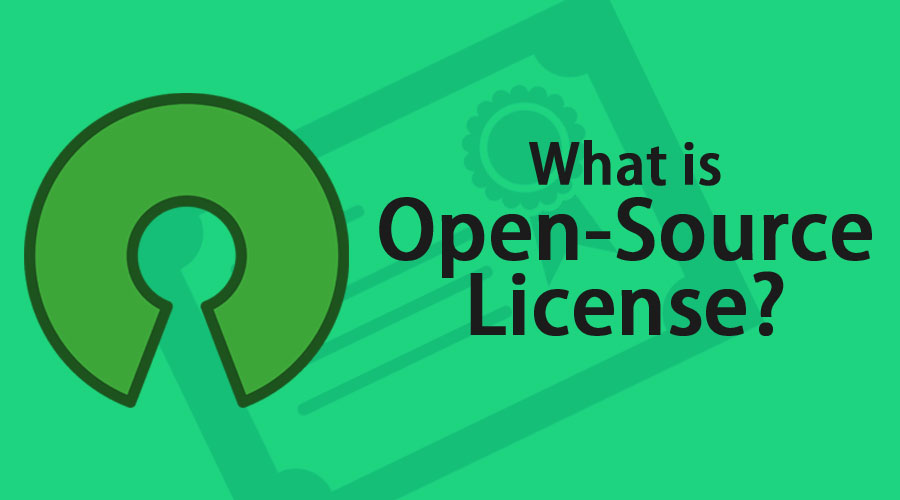
Introduction to Open-Source License
Before going deep into this article, I want to discuss what is the term ‘ open-source’ with you first. Any software donated by the organization with the clone of original source code can be modified and redistributed without any cost because it is freely available. So comes the term Open-Source License; it is a kind of computer software license that includes its source code, design, blueprint, algorithm, etc. It can be easily used, redistributed, and modified under certain measured terms and conditions. So it is clear that open source not only means access to the source code but it contains some important criteria which fall under General Public License (GPL):
- The license must be Technology-Natural.
- Source code
- Free Redistribution
- Distribution of license
- Derived work
- A license must not be specific to the product
- No discrimination between the field of endeavor
- A license must not restrict other software
- The integrity of the author’s source code
On the basis of copyright law, contracts & licensing mouse, the licensing spectrum also contains the following licenses:
- The GPL, LGPL & Mozilla licenses
- Classic proprietary licenses
- The Artistic, creative common & QT licenses
- The Apache, BSD, MIT & academic free licenses
- Microsoft shred source project & sun community source licenses
Types of Licenses
In order to elaborate more, basically, an open-source license is divided into two parts which are:
1. Copyleft Licenses
- Common development and distribution license (CDDL)
- Mozilla public licenses (MPL)
- GPL
- Lesser GPL (LGPL)
- Affero GPL (AGPL)
- Eclipse public license (EPL)
2. Permissive Licenses
- Apache 2
- BSD (Berkeley Software Distribution)
- MIT
The next question just arises in our mind that from where can be applied to open source project with a license, here is the way out to that:
Before sharing with you how we do that, I want to let u know that it’s really simple and very easy to use; you just have to add a license.txt file to your repository. So GITHUB has really made that too very easy, you just have to:
- Just open the github repository in your browser.
- Under the root directory, just make a new file named as a license.
- Then select your license template
- Just review it and submit it
- Commit that file
Hang on ! You have achieved a free, open-source license!
You can achieve a billion of things using the open-source license as it is the path behind every tech farm’s success. It includes many vibrant architectures which have:
- Commercial uses (platform for startups)
- Free software uses under a free, open-source license
- Use it as a module anywhere in your programs & many more
- Uses in public domain
Working on an Open-Source license
Working with an open-source license is a work of ease. You don’t have to do any physical work; it’s a type of understanding between the consumer and organization under four-clause:
- Origins
- Categories from the License Proliferation Committee report
- License Information
- License Approval Process
As soon as you deal with all four clauses, you are free to do any modification distribution and editing of an open-source project. So the licensing index approval gives us access to the free world of open-source license.
Advantages and Disadvantages of the open-source license
Below are the advantages and disadvantages:
Advantages
Below are the advantages:
- Very low cost, you can say negligible cost or free.
- No vendor integration
- Collaboration culture
- Highly efficient and quality product software
- The audit is very easy
- Updates anytime anywhere
- License management
- Debugging is easy
- Abundant support
- Large community
- Scaling
- Consolidating
- Very low hardware cost
Disadvantages
Below are the disadvantages:
- It can be less user-friendly to some people as we are copying the source code indirectly.
- Sometimes support issue may also go wrong.
- Though the open-source license is free, there are charges associated with its plugin modules and many other things.
- Malicious users can potentially view it and exploit any vulnerabilities.
Required Skills
Open-source software has its own programs, algorithms, modules, plugins, so in order to understand that, we need to have basic skills related to particular open-source software. For example, React is an open-source software by Facebook. So in order to work on reacting, we need to have skills on:
- Html 5
- Css 3
- Javascript
- Rect module & components
- Npm
- Es6 & Es5
- Typescript
- Gup
- Grunt
- Git
Conclusion
So open-source license has a large list of advantages, so it is easily accessible to anyone anywhere, anytime. So market demand related to open source product or software is increasing exponentially day by day. Look at the open-source software like Android, open cart, Salesforce, Drupal, etc., all are at their peak of growth. Not only this, it has given the learner’s or beginner’s a good platform to build and upgrade their knowledge as it is free, easily accessible and reusable, and anyone can commercialize it.
So it also opens doors for employment option to underrated and unemployed graduates to gear up their unstable career. With an open-source license, one has millions of option to get profit from it with the least of disadvantages associated with it. To conclude this article, also I would like to end up by saying that when you are creating an open-source license to commercialize it, please do consider its privacy policies and agreement as it includes some little disturbances related to your license. So do have a good review when making an open-source project with any open-source software.
Recommended Articles
This has been a guide to What is open-source license. Here we discuss the working, skill required, advantage, and disadvantage of an open-source license. You can also browse our other suggested articles to learn more –

